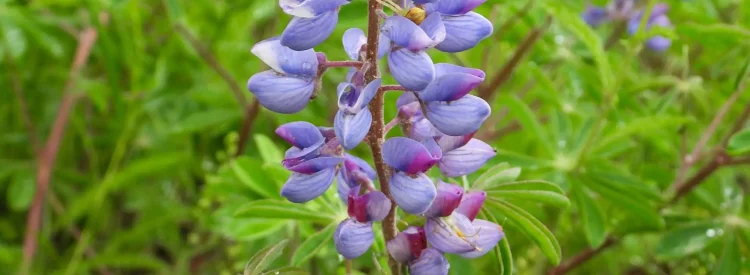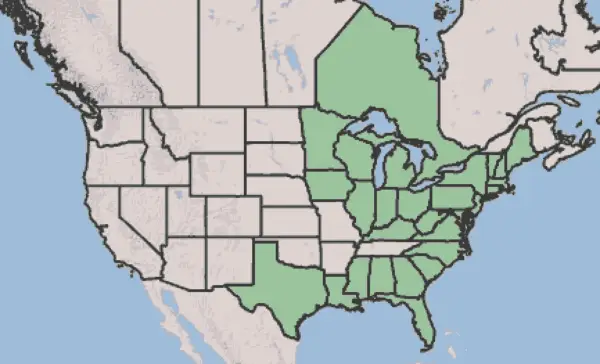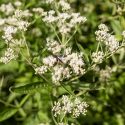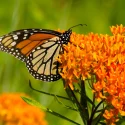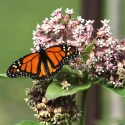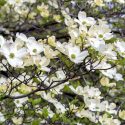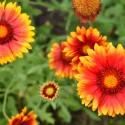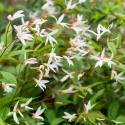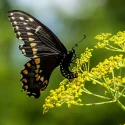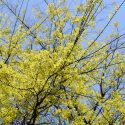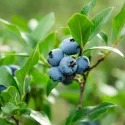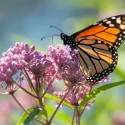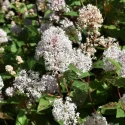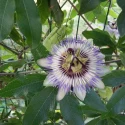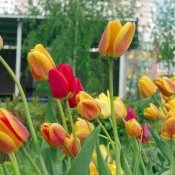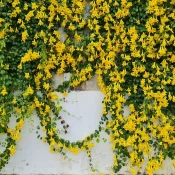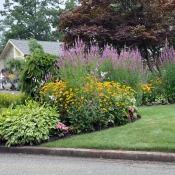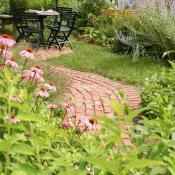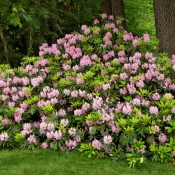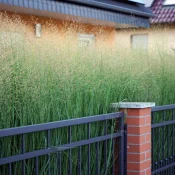Sundial Lupines are proof that flowers can be both stunning and ecologically powerful. Known for their striking spikes of blue-purple flowers, these native plants are not just a visual treat—they’re a lifeline for pollinators, especially some of the rarest ones in North America. Whether you’re looking to add a burst of color to your garden or support declining species like the Karner Blue butterfly, Sundial Lupines deserve a spot in your yard. Scroll on for planting tips.
There are dozens of lupines found over the world—we are here today to put the spotlight on Sundial Lupines. Let’s start our profile with a basic question:
What are the benefits of planting Sundial Lupines?
Sundial Lupines offer lots of benefits, including:
- Low Maintenance: Once established, these perennials require little care. They’re drought-tolerant and thrive in challenging soils.
- Soil Health Boosters: Like all lupines, Sundial Lupines are nitrogen-fixers, meaning they improve soil fertility by adding nitrogen back into the ground.
- Beautiful Blooms: Their tall, showy spikes of flowers make a bold statement in any garden, particularly in wildflower or prairie-style plantings.
New to native?
Before lawns and landscaping, native plants were here. They’ve fed birds, bees, and butterflies for thousands of years—and they’ll do the same in your yard. The best part? They’re easier to grow than you think.
And one more benefit… 🦋
Sundial Lupines are host plants for an endangered butterfly
Sundial lupines are a critical host plant for the endangered Karner blue butterfly. The United States Department of Agriculture says it clearly in their Sundial Lupine Plant Guide:
“Sundial is the only food for the larvae of the Karner Blue butterfly (Lycaeides melissa samuelis). Both fire suppression and habitat loss have contributed to the decline of the lupine and the butterfly. The Karner Blue is nearly extinct over much of its range.”
Wonder what a Karner Blue Butterfly looks like? The male species ranges from blue-tinged to bright blue, while the females have a beautiful speckled pattern on their wings:
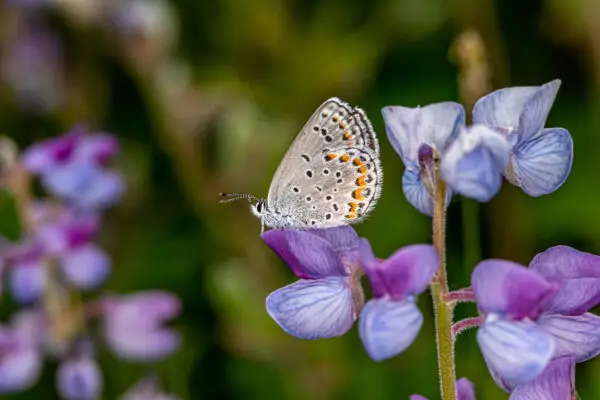
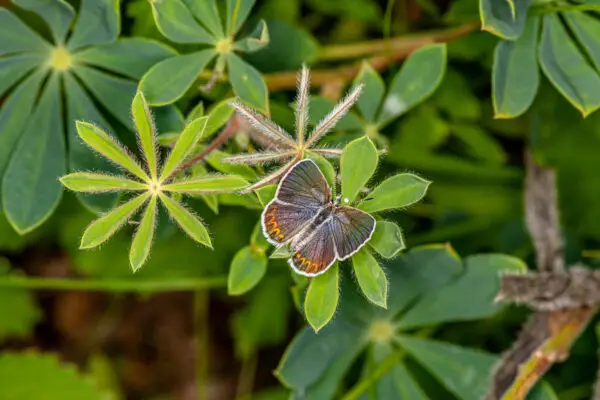
What is a host plant?
A host plant is a specific plant that a bug, butterfly, or caterpillar eats, lives on, or lays its eggs on.
How to grow Sundial Lupines
Sundial Lupines are exceptionally easy to grow and plant. Here is a quick overview of their growing needs:
- Sun to part sun
- Well-drained soil (no standing water)
- Beginner-friendly since it grows in a wide range of soil: loam, sand, gravel, and even a little clay are all fine
A note about planting Sundial Lupines from seeds
The USDA states simply, “This lupine grows in areas that have been burned.” To mimic this event and get Sundial Seeds to grow, you’ll need to rough the seeds up a little in a process called scarification:
- Get a piece of sandpaper (rougher works best)
- Scratch each seed’s surface with the sandpaper to make a scratch
This scratch will trick the seed into thinking it’s been burned, and it will sprout. (Seeds are honestly the closest thing on earth to magic IMHO.)
Now, let’s discuss Sundial Lupine’s native range and why it’s strangely absent from eastern gardens.
Where is Sundial Lupine native?
Sundial Lupines are found in almost half of North America, from Maine down to Texas.
Unfortunately, Sundial Lupines are now rare, especially in the Northeast. They’ve been overshadowed in many East Coast gardens by Bigleaf Lupine, a native of the Pacific Northwest who has taken their place in the spotlight.
Even in iconic lupine havens like Maine, “this native plant is no longer found wild in the state.” Instead, the west coast Bigleaf Lupines have overtaken the east coast Sundials.
How did this lupine mix-up happen?
The short answer? Landscaping. And it happened fast—according to the National Park Service, western lupines began appearing in the Northeast around the 1950s. Since then, East Coast landscapers and homeowners enthusiastically planted Bigleaf Lupines, no doubt believing they were the iconic Northeast species. With the Northeast’s climate closely matching Bigleaf’s native range, these plants have flourished.
Unfortunately, non-native Bigleaf Lupines now dominate places like Acadia National Park, pushing out the native Sundial species. The Park Service is working hard to reverse this, but they can’t do it alone. Homeowners need to pitch in, too.
(Live in Maine? Check out Bar Harbor Garden Club’s Sundial Lupine Project. Their ambitious initiative aims to repatriate native Sundial Lupines to the state.)
To ensure you’re planting Sundial Lupines, check the Latin
Every plant has only one Latin name. This helps botanists, gardeners, and plant lovers worldwide have a common language when identifying plants.
Sundial Lupine = Lupinus perennis
Bigleaf Lupine = Lupinus polyphyllus
If you are looking at a plant or seed packet that does not include its Latin name—be wary. Find a more reputable source that clearly labels plants. (We just checked the lupine seeds at Target, Home Depot, and Lowes; sadly, none of the seed packets had the Latin name.)
Let’s get you set up for success to find some Sundial Lupines by answering this basic question:

Where can I find Sundial Lupines for my garden?
We’ve assembled four tried-and-true ways to find native Sundial Lupines seeds or plants:
Where can I find seeds and plants?
Finding native plants can be challenging (we partly blame Marie Antoinette.) To make it easier, we’ve assembled four sourcing ideas.
300+ native nurseries make finding one a breeze
Explore 100+ native-friendly eCommerce sites
Every state and province has a native plant society; find yours
Online Communities
Local Facebook groups are a great plant source
We’ll make it even easier and share a few places to find seeds online:
- Prairie Moon (Winona, MN) – Sundial Lupine seeds
- Wild Seed Project (Maine) – Sundial Lupine seeds
- American Meadows (Shelbourne, Vermont) – Sundial Lupine seeds
Why are we including the location? Here’s why:
Plants and seeds grown close to home are tuned to your soil, weather, and pollinators. Stay within 500 miles—or about a day’s drive—to help your garden thrive naturally.
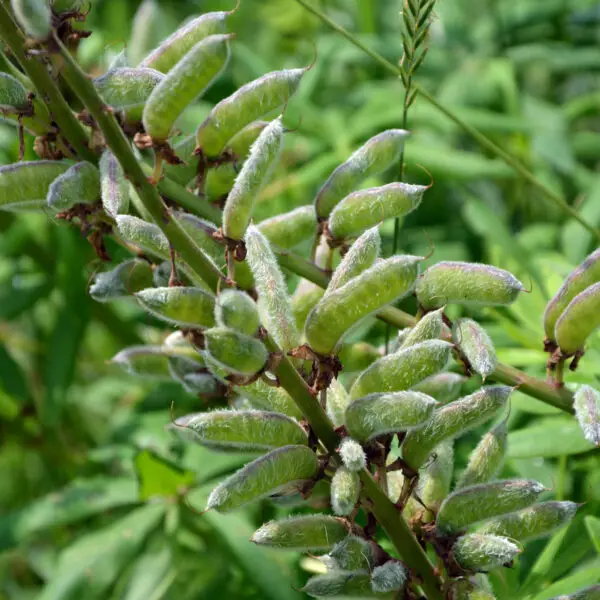
Note for kids and pets
Lupine seeds are poisonous!
Lupines are in the pea/legume family; you’ll see this family tree clearly when you see lupine seed pods. Lupine seeds inside are poisonous if eaten. If you’re worried about nibbling, visit our native plant library to find other native gardening ideas.
And that sums up our love letter to Sundial Lupines! For those living in the Northeast, let’s plant these ASAP and spend a little extra time letting our neighbors (and social media friends) know about what we’ve done. Sundial Lupines are the hidden gems of Northeastern gardening, offering beauty, nitrogen, and host plant goodness alongside fuss-free gardening. They are one of North America’s native lupines—explore our Beginner’s Guide to Native Lupines to meet some more. If you’re looking to find out about some other native gems, visit our Beginner’s Guide to Coneflowers or Beginner’s Guide to Bee Balm. Happy planting!
Sources
- “Karner Blue Butterfly (Lycaeides Melissa Samuelis),” U.S. Fish & Wildlife Service, 2019.
- Anderson, M. Kat. Sundial Lupine Plant Guide. USDA, NRCS, National Plant Data Center.
- “A Tale of Two Lupines (U.S. National Park Service),” National Park Service, February 2, 2023.
- “Sundial Lupine Project.” Bar Harbor Garden Club, April 14, 2023.
What if your feed was actually good for your mental health?
Give your algorithm a breath of fresh air and follow us.
